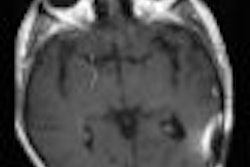Salvage radiation therapy can help boost survival rates for certain groups of prostate cancer survivors who show signs of recurrence after surgical treatment, according to a study by researchers from Johns Hopkins University published in the June 18 issue of the Journal of the American Medical Association.
Nearly 60,000 men had radical prostatectomy procedures in 2007, or 27% of all men diagnosed with prostate cancer. But approximately 15% to 40% of all prostate cancer patients experience cancer recurrence within five years after radical prostatectomy.
If signs of recurrence become apparent following surgery, salvage radiation therapy can be used to deliver local radiation to the prostate bed, either alone or in combination with hormonal therapy.
Early signs of recurrence typically include an elevated prostate-specific antigen (PSA) level or a high Gleason score, a grading system for prostate cancer. Some 65% of these patients will develop overt metastases if left untreated, and the majority will die from the disease. However, the choice of salvage radiotherapy and when it should be implemented generates trade-offs between therapeutic benefits, treatment complications, and quality of life.
Researchers at the Johns Hopkins University School of Medicine in Baltimore sought to distinguish clinical subgroups of men for whom salvage radiotherapy was associated with a significant increase in prostate cancer-specific survival, as well as men for whom salvage radiotherapy demonstrated little or no association (JAMA, June 18, 2008, Vol. 299:23, pp. 2760-2769).
This is the first study to compare outcomes with a group that did not receive any salvage treatment, according to lead author Bruce Trock, Ph.D., associate professor of urology, epidemiology, and oncology and director of the division of epidemiology at the James Buchanan Brady Urological Institute at Johns Hopkins. They found that salvage radiotherapy increases survival rates by more than 75% when it's performed within two years in men whose PSA doubling time occurs within six months of having a radical prostatectomy. The effect was seen with or without supplemental hormonal therapy.
The Johns Hopkins researchers conducted a retrospective analysis of 635 men who experienced biochemical and/or local recurrence after undergoing radical prostatectomy between June 1982 and August 2004. The objective of the study was to identify and compare outcomes for survival of patients who received salvage radiotherapy, salvage radiotherapy with hormonal treatment, or no therapy and observation only.
The 635 men who had the surgery performed at Johns Hopkins were followed up through December 2007. Because a portion of these patients received follow-up care elsewhere, follow-up protocols were not uniform. A single PSA measurement of 0.2 ng/mL or higher was the criterion for biochemical recurrence, and this occurrence within 24 months prior to salvage radiotherapy was used to calculate PSA doubling time.
The study analyzed 160 men (25%) who received salvage radiotherapy alone, 78 men (12%) who also received hormonal therapy, and 397 men (63%) who were simply observed.
The researchers defined salvage radiotherapy as local radiation to the prostate bed. Patients who received this treatment at Johns Hopkins underwent simulation and were treated using conformal radiotherapy techniques. Radiation fields encompassed the prostate and seminal vesicle bed plus periprostatic tissues, with 45.0 Gy delivered to initial fields in 1.8 to 2.0 Gy daily fractions. The timing to initiate treatment was not standardized.
The three study groups differed significantly for all prognostic factors except surgical margin status, the researchers reported. However, men who did not receive salvage therapy had a much higher prevalence of positive lymph nodes. Those who received therapy had significantly shorter time to recurrence, shorter PSA doubling time, and higher PSA level at the time radiotherapy was initiated.
Using univariate proportional hazards models, salvage radiotherapy was associated with a decrease in the risk of death caused by prostate cancer-related illness of nearly 60%, and with multivariable models, more than 65%. There was no change in either percentage when men with lymph node involvement were excluded, an important assessment because patients with positive lymph node metastases are rarely referred for salvage radiotherapy. There also was no difference in survival risk between patients who received salvage radiotherapy alone and those who received salvage radiotherapy plus hormonal therapy, even if the latter exhibited worse prognostic features.
The researchers also determined that the 166 (26%) men whose PSA doubling time was less than six months had the highest reduction in risk of dying of prostate cancer-related illness, at 75% when they received salvage radiotherapy. The risk reduction did not change significantly based on time of therapy, whether it was less than 12 months after recurrence or between 12 and 24 months.
For the remaining 74%, there was no significant association between survival improvement and salvage radiotherapy, with or without hormonal treatment.
Trock and colleagues speculated that men whose PSA doubling time occurs more than six months after surgery may in fact have a biologically less aggressive disease that is less likely to result in metastatic disease or death during their lifetime.
Statistical data from Johns Hopkins indicates that the median time to death of men who have had biochemical recurrence after radical prostatectomy is 13 years. Because of this, the authors caution that the survival estimates they reported may change with more mature data. Another caveat is that 93% of the men studied were Caucasian and the survival estimates may not be applicable to a more racially diverse patient population.
The survival benefit data is consistent with that reported in adjuvant radiotherapy trials, including the European Organization for Research and Treatment of Cancer (EORTC) trial 22911, as well as the National Cancer Institute's Prostate Cancer Prevention Trial (PCPT), the results of which were published in 2006 by Dr. Ian M. Thompson Jr., of the University of Texas Health Science Center in San Antonio.
The researchers recommend that their results be validated with other retrospective studies, and if the results are similar, they recommend that a clinical trial comparing adjuvant and salvage radiotherapy be conducted to evaluate prostate cancer-specific survival and overall survival for each form of therapy.
By Cynthia Keen
AuntMinnie.com staff writer
June 17, 2008
Related Reading
Radiation therapy for prostate cancer linked to secondary cancers, May 28, 2008
Ultrasound contrast boosts prostate biopsy yield, May 22, 2008
CT planning eliminates need for urethrography in prostate, May 12, 2008
Trial results bolster hormone therapy plus radiation for prostate cancer, March 31, 2008
Disease-free survival, mortality uphold novel radiotherapies for prostate cancer, February 14, 2008



















